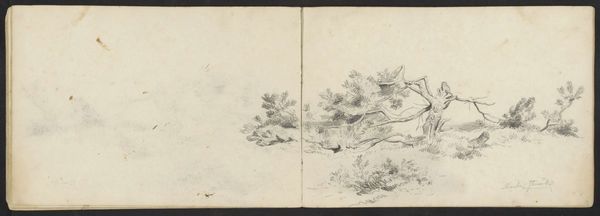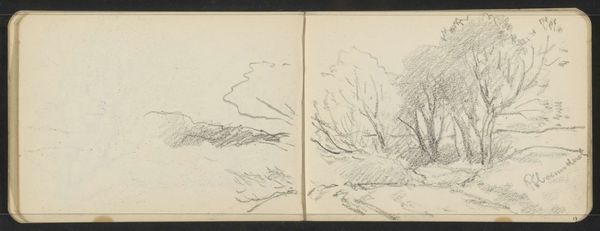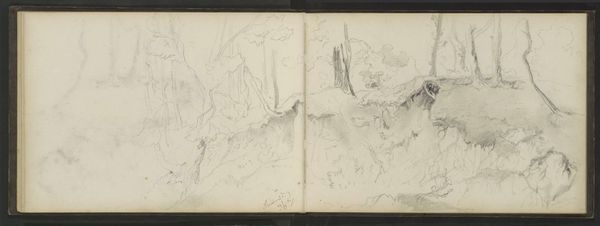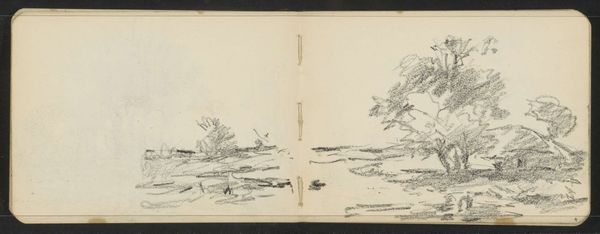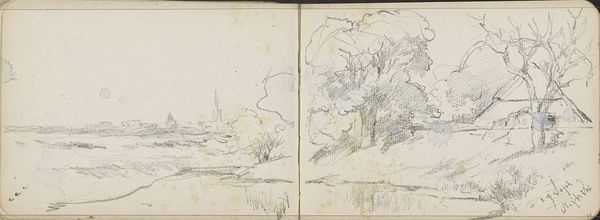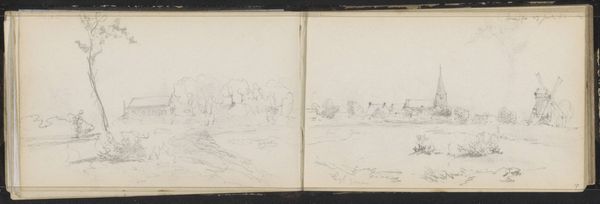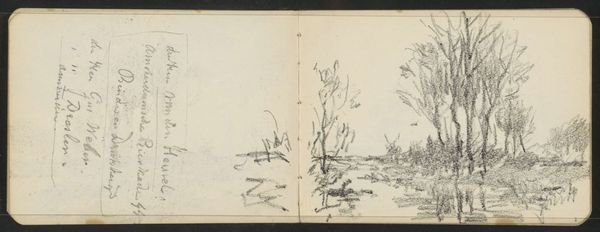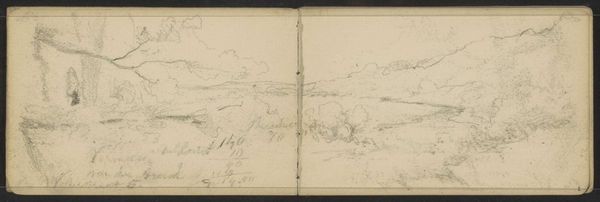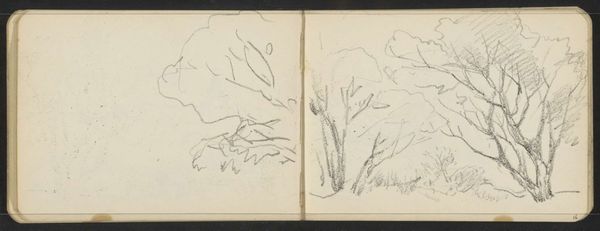
Landschap met figuren naar een schilderij van Barend Cornelis Koekkoek 1842 - 1868
0:00
0:00
johannestavenraat
Rijksmuseum
Copyright: Rijks Museum: Open Domain
Curator: This double-page drawing from Johannes Tavenraat is titled "Landscape with Figures after a Painting by Barend Cornelis Koekkoek" and dates from between 1842 and 1868. Editor: Mmm, sketchbook vibes. The landscape melts away into a soft haze, punctuated by that gnarled, almost ghostly tree on the right page. It’s like a memory fading, a romantic daydream… Curator: It's fascinating to see Tavenraat engaging with the work of Barend Cornelis Koekkoek, who was known for his idealized landscapes in the Romantic style. The sketch, created using pencil and pen, showcases how artists absorbed and reinterpreted established visual languages. We're not simply looking at a landscape; we are observing an artistic dialogue across generations. Editor: That ghostly tree…it is almost calling us in a spooky, silent tone to another realm. A kind of bridge—no pun intended because of the small structure at the right side!—into Koekkoek's painted imagination and a window into Tavenraat's interpretation. It gives me goosebumps in an inviting way. Do you think these personal sketchbooks offered the artist an expressive freedom which was very separate from his role in more 'formal' creative roles? Curator: Precisely. Sketchbooks often acted as spaces for exploration, free from the pressures of the market or the expectations of patrons. Artists could experiment with compositions, techniques, and ideas in a more uninhibited manner. The Romantic era prioritized emotional response and individual interpretation. This sketch suggests the artist, Tavenraat was working out his personal connection to Koekkoek's established style and maybe the artist’s interpretation of ‘idealised landscape’. The unfinished quality only enhances the work's reflective feel. Editor: The contrast between the more rendered left page and the sparser right side highlights the process. It’s not just the destination; it’s the journey. Looking at it, it makes me wonder if all landscapes, even the "idealized" ones, start as personal sketches, a way to map our inner terrain. Curator: Indeed. It is through these quiet observations and reinterpretations that artists shape the world around them. Thanks for sharing your impressions with me. Editor: It has been a great discussion about how art shapes the artist's soul and its creative mind!
Comments
No comments
Be the first to comment and join the conversation on the ultimate creative platform.
